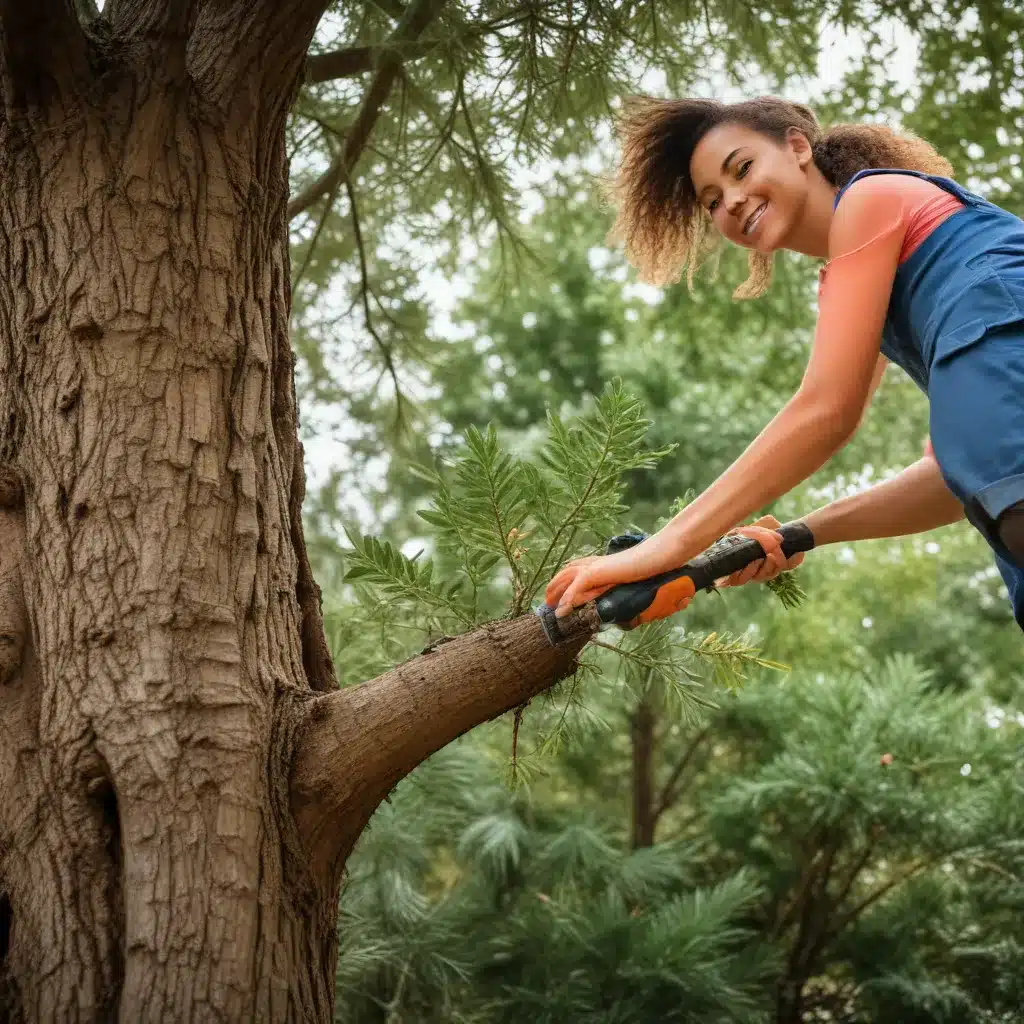
Trees are truly remarkable organisms, providing immeasurable benefits to our environment and communities. As arborists at TriCounty Tree Care, we understand the profound value of proper tree care and maintenance. Whether you’re a seasoned gardener or a first-time tree owner, this guide will equip you with the essential knowledge to keep your trees thriving for years to come.
Tree Anatomy and Biology
At the core of successful tree care is a fundamental understanding of tree anatomy and biology. Trees are complex, living structures composed of intricate systems that work together to sustain life. The root system, for instance, is responsible for absorbing water and nutrients from the soil, while the trunk and branches provide structural support and facilitate the transport of essential resources throughout the plant.
Equally important are the leaves, which serve as the tree’s “food factories,” harnessing the power of photosynthesis to convert sunlight, carbon dioxide, and water into the carbohydrates that fuel the tree’s growth and development. Comprehending these basic physiological processes is crucial for recognizing the specific needs and vulnerabilities of your trees.
Soil and Nutrient Requirements
The health of a tree is inextricably linked to the quality of the soil in which it is planted. Soil composition, pH levels, and the presence of essential macro and micronutrients can all profoundly impact a tree’s ability to thrive. Conducting a thorough soil test can provide valuable insights into the specific amendments or management strategies required to optimize the growing environment for your trees.
Proper fertilization is another critical component of tree care. While over-fertilization can be detrimental, judiciously applied organic matter, such as compost or well-rotted manure, can replenish the soil’s nutrient reserves and support the long-term health of your trees.
Environmental Factors
The surrounding environment can also significantly influence the growth and resilience of your trees. Factors like sunlight exposure, water availability, and wind exposure can all play a role in determining a tree’s success. Selecting species that are well-suited to your local climate and microclimate conditions is essential for minimizing stress and maximizing the tree’s potential.
Additionally, being mindful of potential physical damage from sources like lawn equipment, construction activities, or even curious wildlife can help you proactively address threats to your trees’ well-being.
Pruning and Trimming Techniques
Proper pruning and trimming are cornerstones of effective tree care. By selectively removing branches and foliage, you can promote structural integrity, air flow, and light penetration – all of which contribute to the overall health and vigor of your trees.
When pruning, it’s crucial to follow best practices, such as making clean, angled cuts just beyond the branch collar and avoiding excessive removal of live tissue. Timing is also essential, with many species responding best to dormant-season pruning to minimize stress.
Pest and Disease Management
Even the healthiest trees can fall victim to pests and diseases, which can compromise their vitality and, in severe cases, lead to their demise. Familiarizing yourself with common tree pests and pathogens in your region, as well as their associated symptoms, is a proactive step towards early detection and intervention.
Rather than relying on harsh chemical treatments, consider adopting integrated pest management (IPM) strategies that emphasize cultural controls, biological controls, and organic approaches to mitigate pest and disease issues.
Planting and Transplanting
When it comes to establishing new trees or relocating existing ones, proper planting and transplanting techniques are paramount. Selecting the right tree species for your landscape, preparing the planting site accordingly, and ensuring the root system is properly positioned and protected can all contribute to the long-term success of your trees.
Whether you opt for bare-root, balled-and-burlapped, or container-grown trees, understanding the unique considerations and best practices for each method can help you make informed decisions and set your trees up for thriving growth.
Watering and Irrigation
Adequate water is essential for the health and vitality of your trees. However, getting the balance right can be a delicate task, as both over-watering and under-watering can have detrimental effects.
Familiarize yourself with the specific watering needs of your tree species, taking into account factors like seasonal fluctuations, soil type, and age/size of the tree. Investing in a drip irrigation system or soaker hoses can help you maintain consistent, deep watering that promotes robust root development and overall tree resilience.
Tree Health Assessment
Regularly inspecting your trees for signs of stress, disease, or insect infestations is crucial for proactive care and early intervention. Visual cues, such as discolored foliage, peeling bark, or abnormal growth patterns, can all indicate underlying issues that require attention.
Employing diagnostic tools, like soil analysis or tree core sampling, can provide valuable insights into the tree’s internal health and allow you to make informed decisions about appropriate treatment or management strategies.
Sustainable Practices
As stewards of the urban and suburban forest, it’s our responsibility to embrace sustainable tree care practices that minimize environmental impact and promote long-term ecosystem health. This includes techniques like mulching, which helps retain soil moisture and suppress weed growth, as well as the strategic selection of native tree species that are adapted to local conditions and support local wildlife populations.
By incorporating these principles into your tree care regimen, you can not only ensure the longevity of your own trees but also contribute to the overall ecological balance of your community.
Caring for trees is a rewarding and fulfilling endeavor that requires patience, knowledge, and a deep appreciation for the natural world. By mastering the fundamentals outlined in this guide, you’ll be well on your way to maintaining a thriving, healthy tree canopy that beautifies your landscape and benefits the environment for years to come. For additional resources and personalized support, be sure to visit TriCounty Tree Care – your trusted partner in urban forestry.


